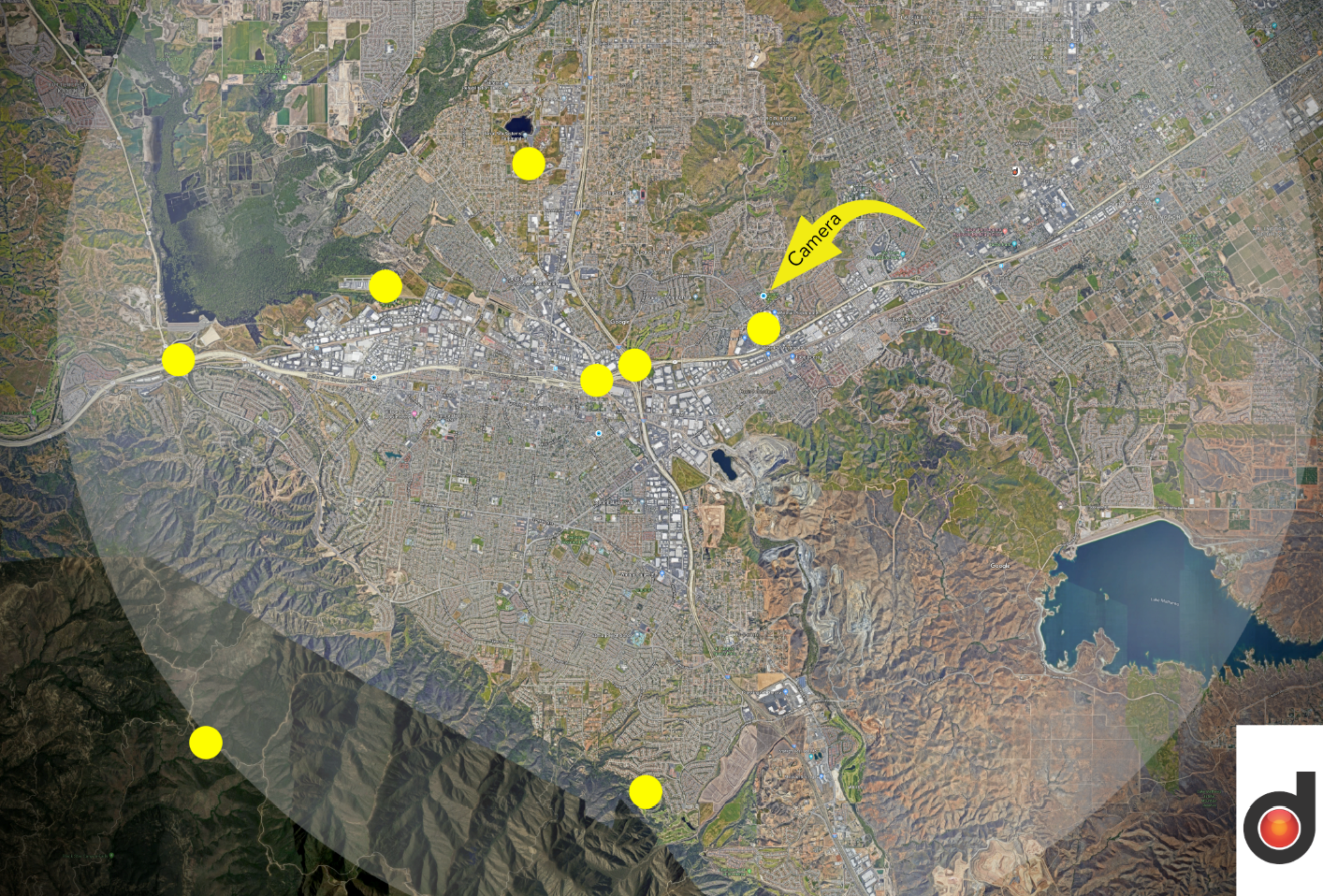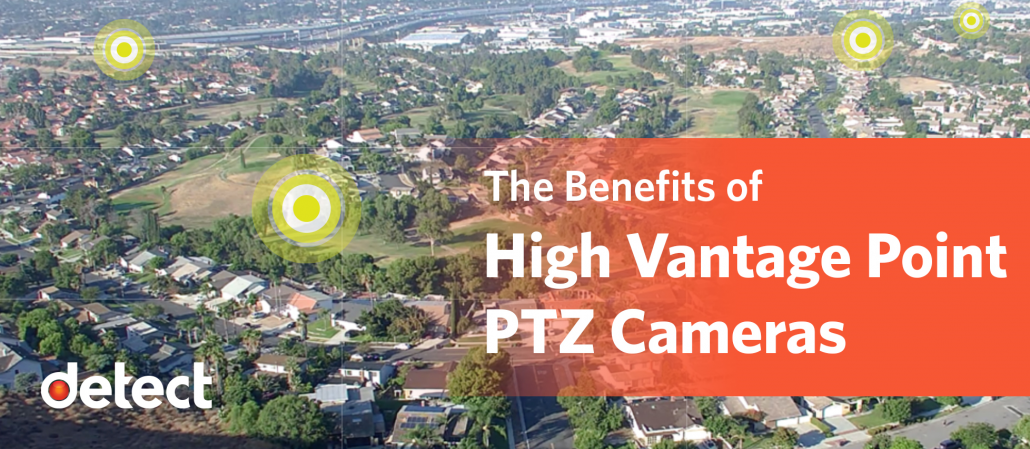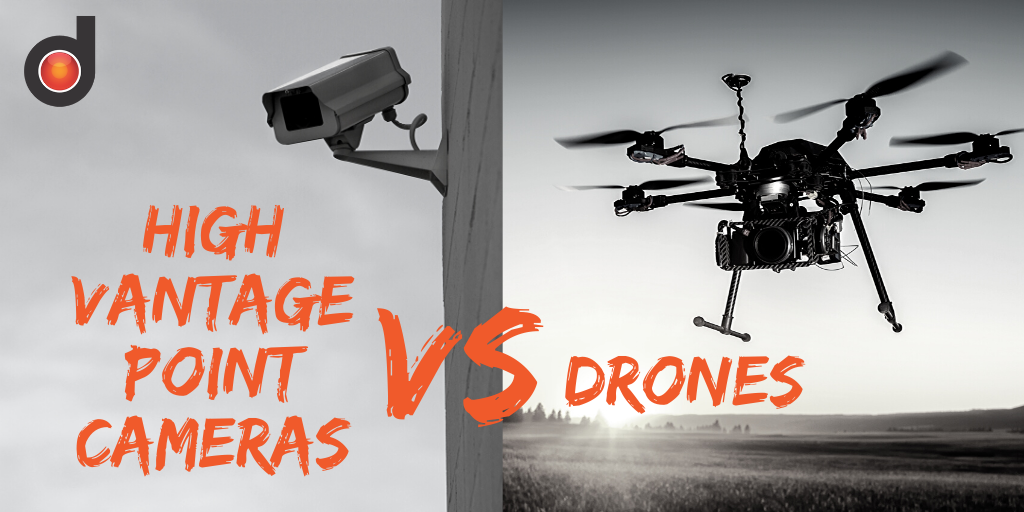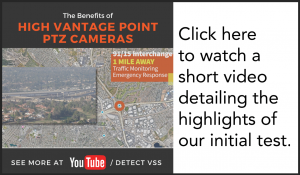The extreme popularity of drones is due in no small part to the incredible aerial photography they’re capable of capturing. A lot of information can be gathered by a skilled drone pilot, and agencies are becoming more aware of the benefits that a new viewing angle can provide, both in surveillance and response scenarios. There are drawbacks, however, including the requirement for licensed pilot and possibly adverse weather conditions that prevent launches.
That said, there are options to obtaining that high-level view. Leverage DETECT recently completed a successful pilot project for the City of Corona for a strategically placed high optical zoom Pan-Tilt-Zoom camera. This camera provides sweeping views up to seven miles away.

While a High Vantage Point PTZ camera cannot do everything a drone can, there are some distinct advantages that should be considered when you are making a decision about which to deploy. A stationary HVPPTZ:
- Remains on station indefinitely and records 24/7
- Can be directed to a response view immediately
- Is operated continually at a lower cost
- Does not require a licensed pilot or staff to operate
- Operates in all weather conditions
- Provides live, extremely high-resolution views
- Program predetermined views of high surveillance areas
There are pros and cons to both drone surveillance and High Vantage Point cameras, and most agencies probably have a justification for both technologies. DETECT is currently proceeding with similar proof of concept exercises for other public safety agencies.
Related Article: The Benefits of High Vantage Point PTZ Cameras



